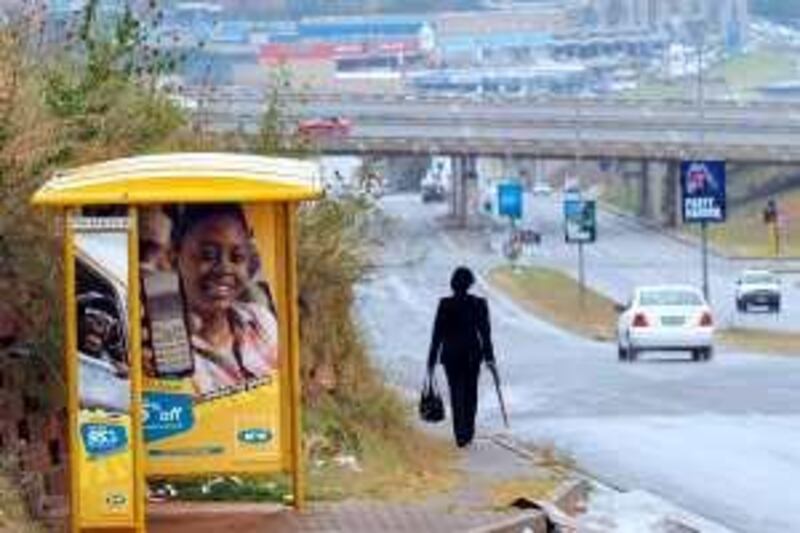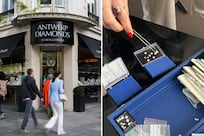The mating ritual of a business merger is a complicated, delicate dance at the best of times. Compatibility is a good starting point. Without it, once the music stops, the relationship sours: think of Time Warner and AOL. International mergers become more difficult because regulatory regimes vary and there are cultural misperceptions: think of the problems Mittal had to overcome when it wanted to buy Arcelor.
Transcontinental mergers are in a class apart - think also Daimler Chrysler - and many fail to get consummated, such as China National Offshore Oil Corporation's attempt to take over Unocal. Sometimes, it would seem, business school professors secretly salivate over such deals so that they can later write textbook examples for their students on how not to do certain things. Many mergers are often designed to fail.
If what makes marriages work is chemistry and mutual respect - love being difficult to define and best left to poets - what makes business mergers work is that elusive notion of synergy: A has something B doesn't; B has something A doesn't; and when A is added to B, the sum is greater than its parts. They can shed the parts they don't like and consolidate on what is common to them and is mutually beneficial. That is synergy, the noun talked up by investment bankers and deal makers when they market prospective mergers in front of sceptical analysts, in the hope that the analysts' recommendations will fire the stock.
Now that the dust has settled on the proposed deal between India's Bharti Airtel and South Africa's MTN, it is easy to see its flaws. That the deal was not a smart one is clear from the fact that shares of both companies rose the day after they called off talks as regulators dragged their feet over the listing requirements and takeover rules regarding the structure of the US$24 billion (Dh88.15bn) cross-border deal.
Under the terms of the proposed deal, Bharti would have taken a 49 per cent stake in MTN, while MTN would have 36 per cent of Bharti, and the resulting group - combined turnover of $20bn - would have 200 million subscribers, the world's third-largest number after China Mobile and Vodafone. But to please regulators, it was willing to buy less-than-majority stakes and pay more per share, making the deal expensive. It would have made real consolidation impossible and the two companies would have remained separate entities. That is cohabitation, not marriage. When it was announced that the deal was off, Bharti shares were up 4 per cent on the Bombay Stock Exchange; MTN rose 5.6 per cent in Johannesburg.
Some of the reasons advanced for the mergers - the arrival of southern multinationals; the coming together of Asia and Africa; the bridge across the Indian Ocean - had nothing to do with business logic, and everything to do with emotional power. Bharti is a major player in India and needs to look beyond to grow. For its part, MTN had spread its tentacles beyond South Africa and would like to be viewed as a major player and is wondering what to do next. But not only was there a mishmash of regulatory authorities, there were also fundamental problems about where the future earnings would come from.
By now marketers know that the size of a country's population is not the same as the size of the market. They also know that per-capita income does not tell us much; in an unequal society, there are huge gains to be made by targeting the top end. And one reason Bharti wants to look abroad is because growth in India is reaching a plateau. True, every Indian does not yet have a cell phone, and that day may not come to pass. But with the industry trend moving towards subsidising the cost of handsets - often giving it away free - to make revenues on line rental or the more lucrative data traffic that can flow on those invisible pipelines, companies need to increase revenue per customer.
But there, Indian and African customers are savvy. In India, consumers remain value-driven and price conscious, avoiding receiving calls when they have to pay for it, preferring to call back the "missed call". In parts of Africa, people use mobiles as payphones, renting them from hawkers when they need to talk. If in these countries mobile phone usage is trumping landline calls, it tells us much about low penetration of land lines to begin with.
Mobiles perform a huge social function in Africa, bringing people together, keeping families in touch with one another, and becoming tools of disseminating critical information. That is attractive to a business if it can make money out of it. And the critical ingredient for that, increasing revenue per customer, is still scarce. Bharti may now feel it should buy smaller companies in the region, or even at home. And less ambitious though it might sound, consolidation within India is an eminently respectable strategy.
Competition at home is increasing. India plans to auction four slots of radio bandwidth for 3G services this year with a starting price of a little more than $700 million (Dh2.57bn) for one slot. Access to the 3G bandwidth will give operators the opportunity to provide high-speed services for customers who want better web access and video capabilities. That is an important market, but the real explosion in demand for phones in India is in rural areas, and many of the new subscribers are poor with limited discretionary income. They are not going to download songs from music stores. They are not going to browse the internet for hours on their mobiles.
True, India has a large, growing young population. There are more teenagers in India than there are people in many countries. But the teenagers are not big spenders - they are dependent on parental allowances. You don't have to read the report that Matthew Robson, a 15-year-old schoolboy intern at Morgan Stanley wrote this July, to know that teenagers like something for nothing. And what is good for Bharti may not be good for Bharat, or India by its official name in Hindi. It would make sense for mobile operators to merge in India to consolidate revenues. But their aim would be to drive up revenue per customer by raising prices - and that's not something the Indian government will be pleased about, given the tougher economic climate.
And for some Indian conglomerates, the mobile business is a vanity brand, kept alive for its attractiveness and oomph. But when the going gets tough, the tough have to shed excess weight, and some consolidation is inevitable. That means investing abroad remains on the table: but this time, with more thought. Salil Tripathi is a London-based writer. He is the former economics editor of the Far Eastern Economic Review
@Email:business@thenational.ae





